Displaying items by tag: saratoga springs
Saratoga Springs History Museum’s Date Night Gala Raises Nearly $10,000
SARATOGA SPRINGS — It may have been an unconventional, but the 2020 Date Night Gala benefiting the Saratoga Springs History Museum was a huge success, raising nearly $10,000.
“When we knew we would be unable to host an in-person gala, we were stymied and stuck. Then we met with Fred McNeary Jr. and John Rowe from Prestwick Chase at Saratoga and they said, we have an idea,” James Parillo, Museum Director said, in a statement. Their idea and generosity paid off.
The History Museum which is located in the Canfield Casino, was forced to cancel three fundraising events due to the pandemic. Funds raised help the museum to provide educational programming, create exhibitions and care for collections.
To learn more about the museum, visit www.saratogahistory.org.
Vaccinations: Who, How & When
SARATOGA SPRINGS — Two COVID-19 vaccines have been approved for use in New York and more may be on the way as the state moves through its first designated phase of vaccinations.
“The vaccine is here. It’s a light at the end of the tunnel and we see this ending the pandemic ultimately, but to do that we need to have 70% of our population vaccinated. In Saratoga County that’s 168,000 people we need vaccinated. So far, we’ve been able to vaccinate about 3% of the population, so we have a long way to go,” Mike McEvoy, EMS Coordinator for Office of Emergency Services at Saratoga County, said this week.
The amount of vaccine the state receives is based upon the allocation made to New York by the federal government. It is up to the state to determine who most needs it first, which is reflected in the phased approach.
“There is a limited supply of vaccines – there certainly is not enough to go around to everybody, so people have been divided into groups to determine who will get the vaccine first, who will it second, who will get it third. The timing of this is based on who is first at risk,” McEvoy says.
The process is currently in Phase 1A – which includes at high-risk hospital workers, ICU staff, nursing home residents and staff, EMS workers and others. McEvoy said he anticipates Phase 1B – which includes teachers, first responders, people aged 75 and older - may begin by early February. But there are may variables.
The first priority is protecting hospital capacity and staff, Gov. Andrew Cuomo said this week. “Vaccinating the hospital staff is vital. They are the front line. The UK strain complicates the issue because if more nurses and doctors get sick, it reduces your hospital capacity. And if you reduce your hospital capacity, then you have the worst-case scenario. And the worst-case scenario is a very real possibility. You overwhelm the hospitals, people die. You have to close down the economy. So, it’s game over if the hospitals get overwhelmed.”
As of this week, New York has received 950,000 dosages toward the first 2.1 million-plus people in the healthcare and nursing home Phase 1A category. By the end of this week, the state expects it will have distributed approximately 911,000 first doses of the vaccine to providers for administration to eligible New Yorkers. The state is receiving about 300,000 dosages per week from the federal government, a rate that would take several weeks to fulfill first-shot doses for millions of people in the first phase.
“Everyone wants to know: When will they get vaccinated? 1A is the healthcare workers and that’s what we’re doing now. 1B are the essential workers and those over 75,” Cuomo said. That 1B category includes: 870,000 educational workers, 207,000 first responders – such as police and firefighters, a combined 200,000 public safety and public transit workers, plus 1.3 million people aged 75 and older, among others.
The governor said he is hopeful the federal government will be increasing production. “They say they will, I believe they will, and frankly the private market is increasing production,” Cuomo said, pointing to current vaccines Pfizer and Moderna, and Johnson & Johnson – which is undergoing efficacy tests and requires just one shot, and Oxford-AstraZeneca. “I can’t say to any New Yorker right now ‘How Long’ until we know exactly what the supply is going to be. The experts are talking about March-April for large-scale, general population distribution.”
THE VACCINES
The FDA and New York State’s independent Clinical Advisory Task Force has thus far approved two vaccines: Pfizer and BioNTech, and another developed by Moderna. Each requires two shots and individuals must receive two doses of the same vaccine, with the second dose administered 21 days later with the Pfizer vaccine, or 28 days later with the Moderna vaccine. Other COVID-19 vaccines under development include Johnson & Johnson’s proposed COVID-19 vaccine, which reportedly plans to seek emergency use authorization in February and could potentially only require a single dose. In New York State, Cuomo has stipulated the vaccines will be provided at no cost.
The program is being led by hospitals in each region. As such, “Saratoga County does not have the capacity to determine who gets vaccinated, how many vaccines we have or even when we get them,” said Saratoga Springs Supervisor Tara Gaston. “I understand the information on vaccinations is not where the public would like it, where the city would like it, where I would like it. The information the state is positing on their vaccine distribution page is all that has been released publicly or otherwise. We are requesting additional information and as soon as we get it, we will be putting it out. There are currently no facilities (yet approved) in Saratoga County that provide vaccination to the public generally,” Gaston said.
“Despite the fact that we do not have the full timeline, Saratoga County is working diligently to plan the broader release of this vaccine. The county is reviewing several sites throughout the city of Saratoga Springs and the remainder of the county so we may institute PODs (Points-of-Dispensing) for the delivery of vaccines with less than 24 hours’ notice.”
Gaston added that anyone who may meet the qualifications to administer vaccines may register to volunteer at www.amc.edu/CapitalRegionVax. “This is the site that’s been set up by Albany Med – who have been assigned the role of leading vaccinations in the Capital Region.”
For the most current information about vaccines in New York, go to: covid19vaccine.health.ny.gov.
New York State is currently in Phase 1A of vaccine distribution.
Eligible New Yorkers for the vaccine currently include: High-risk hospital workers; Residents and staff at nursing homes and other congregate care facilities; Federally Qualified Health Center employees; EMS workers; Coroners, medical examiners and certain funeral workers; Staff and residents at OPWDD, OMH and OASAS facilities; Urgent Care providers; Individuals administering COVID-19 vaccines, including local health department staff, as well as all front-line, high-risk public health workers who have direct contact with patients, including those conducting COVID-19 tests, handling COVID-19 specimens and COVID-19 vaccinations, among others.
Once Phase 1A vaccinations are satisfied, the state will move to Phase 1B distribution.
Phase 1B
Following vaccinations for the health care sector, New York will move to Phase 1B of the distribution, which will include:
• Teachers and education workers
• First responders
• Public safety workers
• Public transit workers
• People 75 and older
CDC: Frequently Asked Questions About Vaccines
Q: Can a COVID-19 vaccine make me sick with COVID-19?
A: No. None of the authorized and recommended COVID-19 vaccines or COVID-19 vaccines currently in development in the United States contain the live virus that causes COVID-19. This means that a COVID-19 vaccine cannot make you sick with COVID-19.
Q: If I have already had COVID-19 and recovered, do I still need to get vaccinated with a COVID-19 vaccine?
A: Yes. Due to the severe health risks associated with COVID-19 and the fact that re-infection with COVID-19 is possible, vaccine should be offered to you regardless of whether you already had COVID-19 infection.
Q: Will a COVID-19 vaccine alter my DNA?
A: No. COVID-19 mRNA vaccines do not change or interact with your DNA in any way.
Source: Centers for Disease Control and Prevention.
State of Winter Sports
After completing a successful Fall Season, the start of Winter sports this week has area high schools navigating another new set of challenges.
“It was a season that was successful for the Suburban Council across all the sports. The stance the entire league took was to protect the season. It was not intentionally more strict than what anyone else was doing. We took all the guidance from the State and local agencies, and used our professional judgement to do what we felt was the right thing to do,” said Nicholas McPartland, Athletic Director for the Saratoga Springs City School District.
HIGH-RISK SPORTS POSTPONED INDEFINITELY
On Friday, the New York State Public High School Athletic Association (NYSPHSAA) announced the postponement of all high-risk sports until authorization is granted by state officials.
The New York State Department of Health has determined basketball, boys’ lacrosse, competitive cheerleading, football, ice hockey, volleyball, and wrestling to be high-risk.
On Dec. 11, it was announced that high-risk winter sports would begin on Jan. 4. The increase in COVID-19 infection and hospitalization rates across the State however, has now postponed the start-date of high-risk sports indefinitely.
OTHERS GIVEN THE GO-AHEAD
Low- and moderate-risk sports began practices this week.
In Saratoga Springs, these include bowling, girl’s gymnastics, Alpine and Nordic skiing, and boys’ varsity swimming/diving (modified is not being offered at this time due to a lack of swimming pool availability).
“While preventative measures have been put in place in our school, we are still working through some of the hurdles that have come up. For the indoor sports, there is inherently a little bit of risk involved, but we felt it was important to salvage the opportunity to have these, as so many other opportunities have been lost for our kids this year,” said McPartland.
VIRTUAL MEETS & NO STATE CHAMPIONSHIPS
Safety concerns associated with increased travel, venue capacity limitations, and social distancing restrictions has also led NYSPHSAA to cancel the 2021 Winter State Championships.
“When examining the feasibility of Winter State Championships, it became apparent that travel and overnight accommodations would create a unique challenge for our member schools,” said Dr. Robert Zayas, NYSPHSAA Executive Director. “At this time, we must prioritize maximizing student participation without a focus on championship events.”
Echoing this sentiment, as well as the desire to protect local businesses, families, and others in the community, school-to-school competitions will be adjusted accordingly.
Bowling and swimming meets will be held virtually until at least Jan. 31. While the details of the girls’ gymnastics matches are still being determined, competing teams will likely have staggered start times to allow for equipment cleaning and sanitizing.
The start of the Fall 2 Season in March, and the 2021 NYSPHSAA Spring State Championships remain scheduled at this time.
Plans Approved for Nursing Home Closure; Residents to Be Relocated
BALLSTON SPA — The Saratoga Center for Rehabilitation and Skilled Nursing Care, a 257-bed facility formerly operated by the county as Maplewood Manor, is anticipated to close early in the new year.
The state Department of Health approved a plan submitted by the leadership of Saratoga Center for Rehabilitation and Skilled Nursing Care to close, said DOH spokesman Jeffrey Hammond.
“According to the approved plan, all of the residents will be relocated to other long term care facilities as soon as possible. DOH will monitor the facility as closure activities commence to help minimize the impact of this closing on the community, and to make sure every resident is relocated to an appropriate level of care,” Hammond said, in a prepared statement.
After learning of the potential closure, Ballston Assemblywoman Mary Beth Walsh sent a letter to Gov. Andrew Cuomo and state DOH Commissioner Howard Zucker, dated Dec. 11, requesting the nursing home closure “be extended appropriately, in consideration of the current pandemic.”
Walsh called the deadline for closure, which is Feb. 15, 2021, a challenging one, even under the best of circumstances.
“With the pandemic, this type of major transition could be unsafe for residents or worse yet, deadly,” Walsh wrote. “Transferring these residents to facilities within the required 50-mile radius necessitates that they will be entering facilities with active COVID cases.”
The Saratoga facility has thus far reported no COVID-19 positive resident cases.
“Given the recent surge in cases in Saratoga and nearby counties, many facilities are not accepting new admissions. This may result in residents having to relocate far from home and far from family supports. I do not question the business judgment of the owners and operators of this facility to make the business decision to close. However, I remain very concerned about the health, safety and well-being of these vulnerable residents,” said Walsh, reporting that 87 residents will be required to relocate. “Allowing sufficient time for residents to be vaccinated against COVID-19, and for the holiday surge in cases to dissipate, would be a reasonable accommodation,” she added.
The Saratoga Center for Rehab & Skilled Nursing Care, is located at 149 Ballston Ave. According to the DOH, the center will continue operations until the last resident is “placed in the most appropriate level of care,” that a full range of appropriate services for all patients/residents must be provided throughout the entire closure process, and that the closure plan must include provisions for the maintenance, storage and safekeeping of patient/resident medical records.
Contact Tracing On The Way
BALLSTON SPA — In March, the Saratoga County Board of Supervisors authorized $1 million to be directed to battling the spread of COVID-19. There were 16 confirmed cases of COVID-19 in Saratoga County at the time.
In May, the Board authorized Saratoga County Administrator Spencer Hellwig to hire as many as 50 Contact Tracers at the rate of $25 per hour – the costs to be paid from the appropriated $1 million fund.
Seven months later, with the number of cases nearing a total of 4,000 in Saratoga County, $800,000 of that $1 million has remained unused, and only 23 Contact Tracers employed.
“We authorized 50 Contact Tracers. In November it came to my understanding that we only had 23 Contact Tracers,” says Tara Gaston, one of two city supervisors who represent Saratoga Springs at the county level. “Whether anyone in leadership knew about it, I don’t know, but that’s when I learned we had only hired 23. Before that, it hadn’t been discussed. And it was about this same time that we determined that New York State - which had promised us to be able to use their Contact Tracers – was going to limit our access. So, it became an even larger concern,” she says.
“I do think mistakes have been made - some at the individual level, and some as a result of the Board of Supervisors not setting this forth as a priority,” Gaston says. “When the request was made for 50 Contact Tracers, we were under the impression that was sufficient, and we were also under the impression that if it was insufficient someone would come and tell us.” There are 21 municipalities represented by 23 supervisors from all across Saratoga seated at the county board. “We have not done what we should have done. I should have done better. We all should have done better.”
On Dec. 15, Gaston introduced a measure to allow the hire of 25 additional Contact Tracers – which would bring the allowable number of hires up to 75 in all – as well as 5 Supervising Contact Tracers. That number of 75 would bring the number of county Contact Tracers in line with the Johns Hopkins standard of about 30 Tracers per 100,000 people, as well as allow a slight buffer zone should any workers step down.
A second measure she introduced targets $100,000 of the $800,000 remaining in COVID county funds for the purchase of PPE and masks for distribution in the community.
The $100,000 PPE allotment is broken down this way: $75,000 targeted for masks to be distributed to the general public in the community; $25,000 specifically set aside for any form of PPE – masks, gowns, gloves, or face shields – targeting the local population at higher risk like EMS workers, police officers, and “communities of lower economic power,” Gaston says, such as those who are unhoused.
Saratoga Springs City Supervisor Matt Veitch expressed his support for both resolutions. The county Board subsequently approved both measures.
After spiking in the spring, local infection rates subsequently were reduced and remained below 1 % through most of the summer. The 7-day rolling average COVID-19 positive infection rate doubled from 0.6% on Oct. 1 to 1.2% on Nov. 1 in Saratoga County. From Nov. 1 to Dec. 1, it more than tripled to 3.8%, and has subsequently continued to rise – by mid-December climbing to near 6%, the highest 7-day average rate registered in Saratoga County since April.
Contact tracing helps prevent the spread of COVID-19 by rapidly interviewing positive patients, identifying and alerting their close contacts to prevent the spread of the infection to others.
Here’s how it is designed to work: When a person tests positive, a COVID Contact Tracer works with the person to identify and reach out via phone and text to anyone they’ve been in contact with while infectious to trace and contain the spread of the virus. People who have come in close contact with someone who is positive are then asked to stay home and limit their contact with others. The Tracer will also connect persons infected with support and resources they may need through quarantine, such as help getting groceries or household supplies, child care, medical care or supplies.
Saratoga County’s contact tracing program operates 8 a.m. to 8 p.m. every day. This week’s vote by the Board authorizes the additional hiring of up to 25 Contact Tracers at the rate of $25 per hour, and up to five Supervising Contact Tracers at a rate of compensation of $30 per hour.
On Nov. 19, the county’s Department of Public Health posted a flyer indicating it was seeking individuals interested in working as Contact Tracers. A subsequent notice, posted Dec. 11, indicated a large number of applications had been received and that no new applications were being accepted. It is unclear whether the Board’s actions of Dec. 15 would trigger a new “Contact Tracers Wanted” request. The Dec. 11 post informs: Please check back on Dec. 18 for an update. The Saratoga County website may be found at: saratogacountyny.gov.
Major Calvin W. Preston of Galway: Soldier & Hurricane Survivor
On the sunny morning of October 21, 1861 – to cheers from tens of thousands of citizens, with bands playing and the roar of cannons - Calvin W. Preston, Galway farmboy boarded a towboat-drawn barge at the Albany, NY docks with other soldiers of the Ellsworth Avengers regiment for the beginning of a dangerous and arduous journey that would lead to perhaps the most important battle of the Civil War: Gettysburg.
Born on February 28, 1845, he was the fifth son of Dr. and Mrs. Calvin Preston. The Prestons, originally from Antwerp, NY were attracted to Galway by family connections and the potential for a thriving medical practice. They settled on East St. in the 1830s where they built a six bedroom home and raised a large family.
Caught up in the furor over the death of Elmer Ellsworth, Mechanicville native, Abraham Lincoln confidant and the first Union soldier to be killed in the Civil war - at age 16 Calvin enlisted in the 44th New York State Volunteer Infantry Regiment, aka Ellsworth Avengers on September 2, 1861 as a drummer. He was active in General George McCellan’s ill-fated Peninsula Campaign, a failed attempt to occupy Richmond, Va. - capital of the Confederacy. At the campaign’s end he contracted dysentery, was sent home for the “Northern Cure” returning to his regiment in time to participate in the Battle of Gettysburg. In the aftermath he assisted in the care of the wounded and the seemingly endless task of burial of the dead.
Mustered out on October 11, 1864, he trained as a druggist and in 1866 joined his brother James, who had served in the Confederate Army, in Galveston, Texas. Four years later James passed away under mysterious circumstances and shortly afterward Calvin married his widow. Calvin became a prominent citizen of Galveston operating a drug store at a location in the business district referred to as Preston Corner, was a high ranking member of the Free Masons and Texas Society- Sons of the American Revolution, and a member of the Texas Volunteer Guard with the position of Major and Inspector General.
On September 8, 1900 with no advance warning a hurricane passed through Galveston. Looked upon initially as routine flooding in a city whose maximum elevation was 8 feet above normal high tide 8000 lives were lost; it remains the worst natural disaster in US history.
Calvin responded heroically in the rescue of his family, wading home from his office as conditions worsened, managing to borrow a rowboat along the way. Upon arrival he found them standing on the dining room table. Crowding them into the boat he pushed it through shoulder deep water to the nearby Rosenberg School, a 3 story, massive stone and concrete structure, with wind gusting to over 100 MPH.
The night spent there was not a comfortable one as the level 4 hurricane buffeted the structure with wind gusts of up to 180 MPH and a storm tide of 15-20 feet. To make matters worse a lightning strike caused the internal collapse of a chimney flue, resulting in deaths of people huddled below.
Disposal of bodies was an overwhelming task, a description better left to other historical accounts. The effort to rebuild Galveston after the storm took several years and included the construction of a 17 foot high seawall to prevent future storm related disasters.
For Calvin the aftermath was too much to bear, the memory of similar carnage and loss of life at Gettysburg still clear in his mind. Two of his brothers – William and Platt – wealthy mill owners in Waitsburg, Washington invited him and his family to move there, providing him with a job in one of their businesses. He again prospered and was elected mayor of the city. His untimely death came 5 years later due to pleurisy.
Well liked and respected, the homage to him at the funeral service concluded with the words of William Shakespeare:
His life was gentle and the elements so mixed in him that nature might stand up and say to all the world, “this was a man.”
Open for Business: New City Center Parking Structure
SARATOGA SPRINGS — With the swift shearing of a green ceremonial ribbon, the long awaited City Center parking facility – and the 600-plus parking spaces it brings to downtown Saratoga Springs – was unveiled this week and announced itself open for business.
Through the end of this calendar year, the first four hours of parking is free of charge. Parking rates for 2021 will be free for the first hour of parking, and $1 per hour after that first free hour, with a $15 cap charge in the 12 a.m. to 11:59 p.m. period.
The $16 million multi-floor structure features secure covered parking for over 620 vehicles, four electric car charging stations, two green spaces, a pair of elevators and an open, flat, roof top area that can be used for parking and for convention related events.
A glass-enclosed pedestrian walkway extends over Maple Avenue, connecting the parking structure with the City Center complex.
The structure was unveiled Nov. 10 during a ribbon-cutting ceremony attended by regional business and economic leaders and city officials. Saratoga Springs Mayor Meg Kelly city councilmember Anthony “Skip” Scirocco addressed the crowd.
“It is so exciting to bring this needed project to fruition, and to be part of the City Center’s continued growth, but the credit for this project also belongs to many current and former city council members, City Center Authority members, City Center employees, and members of the business community,” said Ryan McMahon, executive director of the Saratoga Springs City Center.
The City Center, located at the north end of Broadway, opened in 1984 and has served as host to corporations, New York State Associations, trade groups and northeast regional organizations, gate shows, fundraising galas and social events. The conference complex offers a total of 58,000 square feet of conference space when partnered with the adjoining 242 room Saratoga Hilton Hotel.
The development of an adjoining parking structure has been debated, often vehemently, for more than a decade and the project has undergone a multitude of suggested variations.
Community concerns targeted the facility’s size, its design, and its location atop prime city-owned land. Conversely, a large contingent of business owners have long advocated for its creation, reasoning that the additional parking spaces would increase the economic vitality for downtown retail shops and restaurant. And City Center officials have discussed the need of easy parking for potential clients to compete in a marketplace with other regional centers vying for convention business.
“You always want to improve your game,” Tom Roohan, chairman of the Saratoga Springs City Center Authority, told reporters at Tuesday’s ceremony. “In December 2013 we started this process, and I think we ended up with a great project with more than 600 parking spots, a well-lit, safe and secure parking facility that will help encourage companies to come into town.” During evening hours, a security guard will be on premise to offer an added layer of safety. A limited number of yearly parking passes are available for purchase from the Saratoga Springs City Center.
The structure, which stands one block east of Broadway, was developed atop a surface lot that saw the elimination of 188 previously free parking spaces. For the time being, parking continues to be free of charge in most of the other existing public parking areas downtown, as well as on city streets.
Five Decades, Same Opportunities
The year was 1973 and downtown Saratoga Springs was facing a crisis. Twenty-two storefronts were vacant, with almost all the 2nd and 3rd floors empty. Simultaneously construction of the Pyramid mall had begun at exit 15. The perfect recipe was brewing for a downtown disaster.
Today we face a similar challenge. Communities are locked down in a global pandemic, which includes social distancing and reduced numbers allowed in businesses. We already have empty storefronts and business owners worry more may be coming. Deja vu? Not to worry.
In 1973 local citizens stepped up to the challenge…and today local citizens are once again stepping up to the challenge. Two similar crises, separated by decades, but in both circumstances, leadership, optimism, and community action came together to save the day.
First let’s look at the past. It was the mid-90’s and Joe Dalton of the Chamber of Commerce, along with Bob Bristol of The Saratoga Associates, called a meeting with a dozen property owners. This informal meeting led to the creation of a dynamic ‘Plan of Action’ which would guide the city for years to come. Within weeks dozens of citizens had volunteered to work on the project.
Bill Dake of Stewart’s Shops steered it for the first six months, after which Charles Wait of Adirondack Trust Company served as its chairman. “A lot of people did a tremendous amount of work” said Bill Dake. “As people saw the positive impact taking place, more people got involved. Downtown got its own personality!”
A lot of people got involved in the ‘Plan of Action’ from attending charrettes, to planting trees, to major facade improvements, but the key issue may have been getting the City Council to remove the restriction on restaurants and bars serving outside on Broadway’s wide sidewalks.
“It gave Broadway a unique personality as people watching was the best and cheapest entertainment there was,” added Dake. Rumor has it the sidewalk activity had been curtailed years before after the Mayor’s daughter was “mooned” by an over-served patron from one of the bars. But I digress.
One of the first projects that took place was a massive clean-up…something tangible that would yield immediate results. From there an all-volunteer crew dug holes and planted 80 mature trees in the business district, the number reaching 250 within 20 years!
With visible progress taking place, property owners dug deep and funded a basic design plan. That, coupled with a new 1 percent sales tax increase and federal Community Development funds, and the ‘Plan’ was taking on a life of its own. From façade improvements to streetscapes and parking, downtown Saratoga Springs transformed itself, and within a decade 70 percent of the downtown businesses were new; vacancy was a rarity, a testament to community action!
Fast forward to November 2020. With decades of growth under its belt, downtown Saratoga Springs has been the envy of small towns across the nation…but the wheels of progress are quickly slowing. Vacant storefronts are popping up and long-time events which are part of our fabric have been cancelled.
However, led by the DBA (Downtown Business Association), scores of volunteers are once again mobilizing and have reimagined a downtown holiday celebration. “When we realized that there was no way to have Victorian Streetwalk this year, the DBA knew we had to do something to promote downtown and keep our holiday tradition alive” said DBA President, Deann Devitt. “The more we thought about it, the more we realized that we needed to make downtown a destination for the entire Holiday season and remind people how unique Saratoga is!”
At that point they approached Saratoga Springs Special Assessments District with their ideas. “They immediately agreed to partner with us and provide us with a $10,000 grant to help spread the holiday spirit throughout the City. And with that grant, a month-long celebration called Victorian Streetscapes was born!”
Next, they reached out to their friends at Discover Saratoga who were happy to collaborate on the effort. “We hope that this will give one more reason for folks to come downtown throughout the season to take in the holiday atmosphere and of course, shop local!” said Darryl Leggieri, President of Discover Saratoga. “We must continue to work together as a united community, and help our neighbors and local businesses succeed during these difficult times.”
Once the actual planning began, the amount of support from local business owners began rolling in. The Charlton School, with the help of Saratoga Land Management Corp., stepped up with a 19-ft Norway Spruce for downtown. Elms Farm donated thirty, 6-ft. trees for storefronts while Allerdice and Dehn’s Flowers worked on critical behind-the-scenes details. Also instrumental in organizing the event were Mayor Meg Kelly and Commissioner Scirocco and their teams.
Let’s not forget about Santa! Although he won’t be in his cottage this year, Santa IS Coming to Town! He will be driving through Saratoga neighborhoods visiting children on a vintage fire truck provided by King Enterprises.
Devitt finished with “The reality is, during these unprecedented times, it truly ‘takes a village’ to support our local businesses, and without question, this city, its residents and fellow business owners have been that village.”
Saratoga Strong!
Freedom of Speech vs. Freedom from Harassment
There is a basic law of economics which states, if you subsidize undesirable behavior, you will get more undesirable behavior. I believe the same is true if you ALLOW undesirable behavior.
If you had not yet heard, this past Saturday downtown Saratoga Springs was once again the epicenter of a 6-hour long standoff between protesters and everyone else.
The unscheduled event, which violated city ordinances, shut down multiple roads and left businesses and restaurants empty on what could have been their busiest day of the season.
This comes approximately 5 weeks after the emergency city council meeting which was held to address this specific type of situation. At that meeting, Mayor Meg Kelly came out strong stating
“It is time to make some changes here because we cannot have this happening time and time again in the city of Saratoga Springs – period. We are not going to block streets.”
Public Safety Commissioner Dalton shared her sentiment “The Saratoga Springs Police Department recognizes the right to peacefully protest, however, one person’s constitutional right does not supersede another’s.” Assistant Chief Cattone then laid out guidelines and actions which would be taken moving forward.
I am not sure what happened between that October 1 meeting and last Saturday, but officers from SSPD, the Sheriff’s Department and the State Police stood by as the protesters chanted “Biden won but we’re not done…These are our streets” and taunted the officers. There were also numerous reports of bystanders and families being harassed before they got out of town.
I have to say that I am disgusted, embarrassed, and sickened by this situation. We are in a global pandemic, businesses and families are struggling, yet some individuals feel they have the right to shut down roads, detour traffic at their discretion, and shout vulgarities over a megaphone. And let’s not ignore the fact that the blocked intersection is the primary road to Saratoga Hospital. What happens when a frantic mother is rushing her asthmatic child to the hospital and discovers her route is shut down and she must find a detour?
On Monday morning I had the opportunity to speak with several downtown business owners, and the financial gravity of the situation really hit home. One food/drink establishment shared, “We are struggling to make rent and pay staff. Normally on a 75-degree day, in November, we would be hopping until closing. We were empty from about 3-9 on Saturday. That crushes us.” Of important note, this was restaurant week! The other businesses I spoke with shared the same frustration and anger.
So, my question is why weren’t arrests made? Why weren’t the roads opened? Why do we tolerate this behavior?
According to SSPD Chief Crooks a tactical decision was made based on information relayed to him by supervisors on scene. “There were too many protesters vs. the number of officers.” I asked him the next logical question: why were officers on scene for hours if they weren’t going to make arrests? “Officers were there in case anything happened with the public,” he responded. “There were a number of interactions between the group and bystanders.”
I understand the police are in a no-win situation. They are damned if they do and they are damned if they don’t. But allowing these situations to continue is unacceptable and only emboldens the organizers. Forget the horrific impact on business and the potential for medical disasters due to the street detours; let’s look at the financial impact to you and me.
Every one of these occurrences, and they are increasing in regularity, costs the city thousands of dollars in overtime. An estimated guess of the infamous July 30 protest in front of Congress Park, which lasted well into the late evening, cost us $10,000. That is money not going to kids’ programs, homeless assistance, or critical infrastructure.
Who are these protesters? With the exception of the few individuals behind the megaphone, the majority this past weekend were white teenagers from our local high school and Skidmore College. The scene looked more like a dysfunctional Justin Bieber concert than anything else. Perhaps there is an opportunity here for Skidmore administration to step up and contribute to the good of our community. If Skidmore students are arrested for civil disobedience (blocking roads), I would think they should face disciplinary action under the school’s code of conduct. Skidmore students are guests in our community. I would love the hear Skidmore’s view on this.
Start arresting these kids as soon as the roads are blocked and let’s see how long their resolve lasts.
But don’t get lulled into a false sense of security. The troublemakers in the late September protest were a whole different group of agitators. In that protest they marched through our streets, harassing diners and yelling at families, while surrounded by their own security force dressed in black with baseball bats!
One thing I can predict is that sooner or later something bad is going to happen. We will either take the path of neighboring cities and slide downhill into crime and chaos, or the citizens will begin standing up to these groups and take back the streets. Neither scenario has a good ending.
In closing, the primary function of government is leadership, and to maintain law & order. Sadly, they are falling short on both right now. I know many families who have stopped coming into town because of this problem. Those families used to spend their hard-earned money shopping and eating in our city. Can we afford to turn our back on anyone right now? Do we want a city where women and children feel threatened?
They need to figure this out and put an end to it NOW. Otherwise, deputize community members and let them clear the streets.
-Chad
The Death of Gideon Putnam
December 1, 1812 was the date on which the founding father of Saratoga Springs, Gideon Putnam, died.
Gideon and his wife Doanda Putnam were probably the most influential couple in the formation of our great city. Gideon was originally from Sutton, Massachusetts, while Doanda was from Connecticut. Shortly after their marriage in 1787, the two began to strike out for a new beginning in Vermont and then on to the Saratoga Lake area. None of those locations worked for them until they moved to Saratoga Springs in 1789 and it all seemed to fit.
Gideon and Doanda came to the Saratoga Springs area and found a region with vast pine forests. Gideon realized that those trees could be turned into lumber to feed the need for building materials in this new developing village. Gideon began to also realize that the naturally occurring mineral springs would be a draw for large numbers of summer visitors, but the area lacked the required accommodations to support these tourists.
In 1802 the Putnams are credited with building the first hotel in the village, called Putnam’s Tavern and Boarding House. Located on Broadway, a few steps away from the Congress Spring, the hotel was an immediate success with visitors coming to the springs. The Putnams offered comfortable accommodations, good food and drink for their guests. Putnam made improvements to the Congress Spring and then later to the Columbia Spring, for easier use by those looking for a cure for their ailments by taking the waters. Gideon’s success in business was shared with the young village as he donated land for a cemetery, church and school to help plan for a great future community.
Gideon felt so strongly about the efficacy of the waters that he published a set of guidelines for the “Proper use of the springs.” He set forth clear rules that were intended to not pollute the springs as well as making the water forever free at the spring. This simple rule of free water at the spring set the tone for this rapidly developing resort destination. Owners of the mineral springs could not charge to drink at the spring and therefore could only make money by offering baths and bottling the waters for widespread distribution. In time Saratoga Springs would become the number one tourist destination in the United States during the 1800’s.
Putnam’s Tavern and Boarding House was such a success that Gideon and Doanda bought more land and began laying out many of our streets including our beautiful Broadway and adding to the size of their boarding house. By 1811 the Putnams realized that it would be a logical plan to build another hotel across the street, also on Broadway. As construction started, they decided to name the new hotel Congress Hall, after the Congress Spring. By this time the spring, a short walk away, was so famous with visitors that he thought this would help in future promotions for the hotel.
During construction of the Congress Hall, Gideon fell from the north end of the piazza and was severely injured. Gideon lingered for many months and eventually succumbed to those injuries on December 1, 1812. Even though Gideon had passed, his wife and family continued to run their businesses as well as their hotels for many years until 1864. Gideon may have died in 1812 but his idea to allow for free mineral water at the springs and plan for a successful resort city still continues today as Saratoga Springs attracts thousands of visitors a year and our mineral springs continue to be free every day.
Charlie Kuenzel taught at Saratoga High School for 36 years and was co-owner of Saratoga Tours LLC for 19 years. Author, lecturer and currently President of Saratoga Springs History Museum, Charlie loves Saratoga History and can be reached at This email address is being protected from spambots. You need JavaScript enabled to view it.




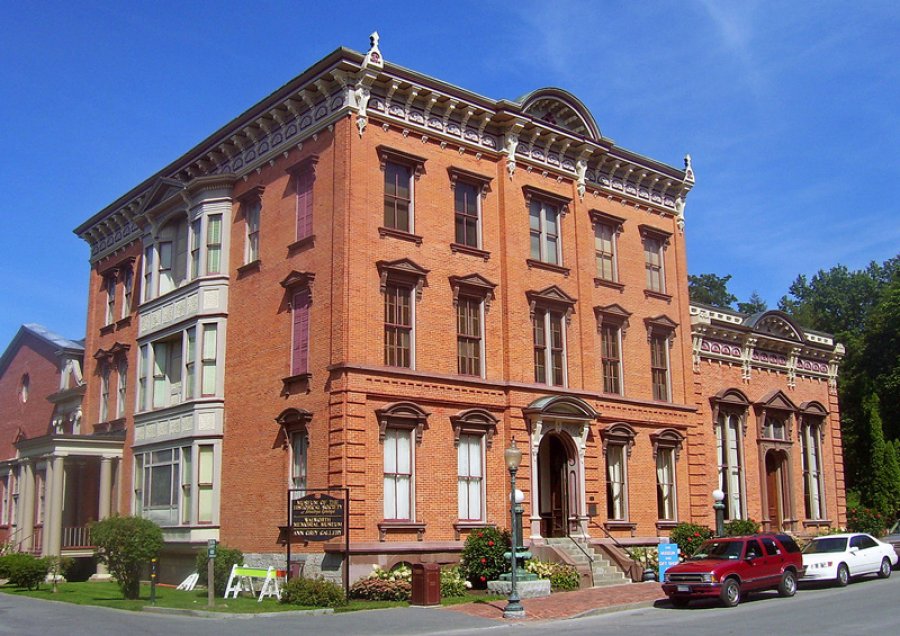
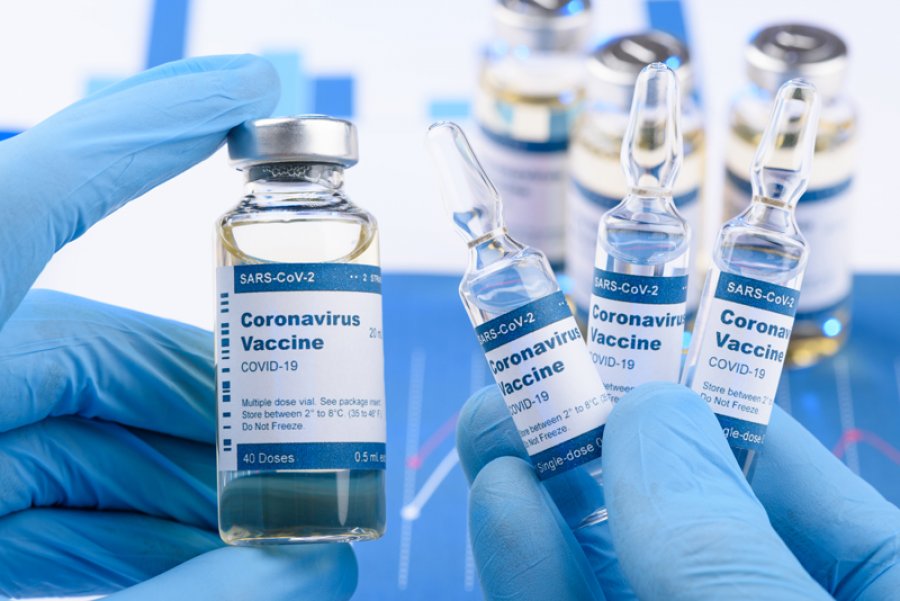


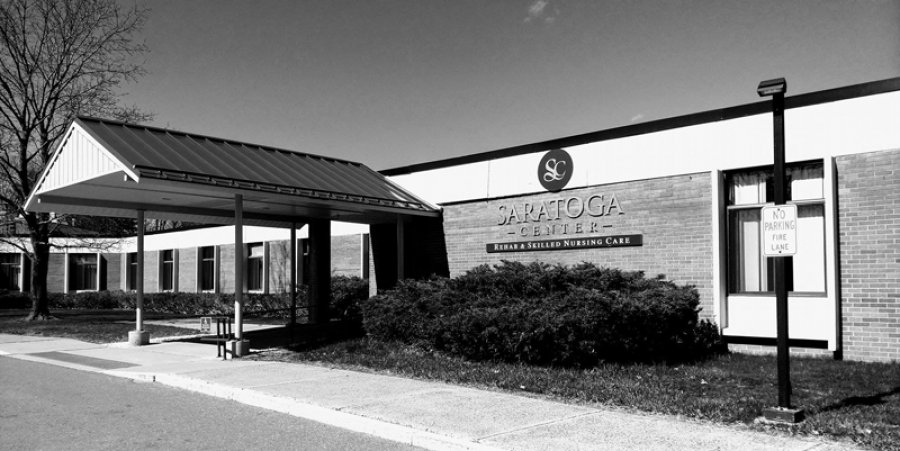

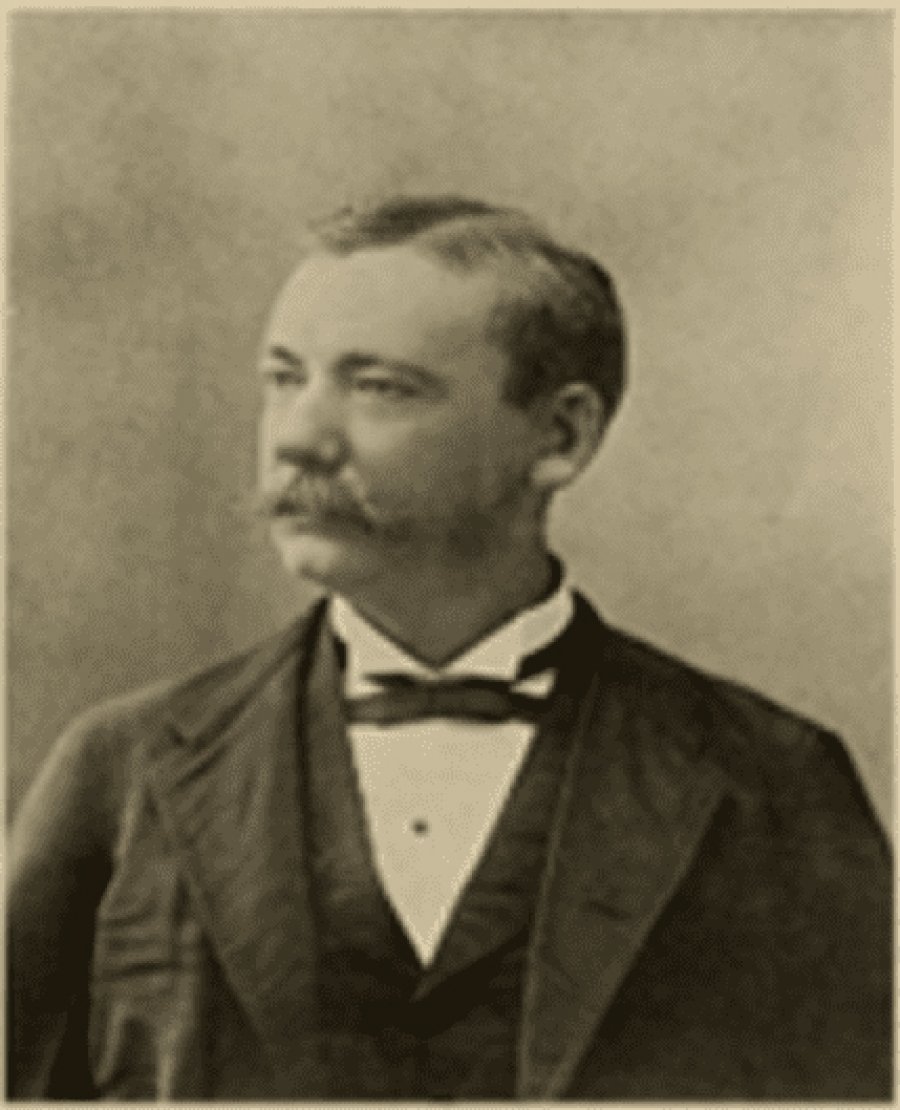
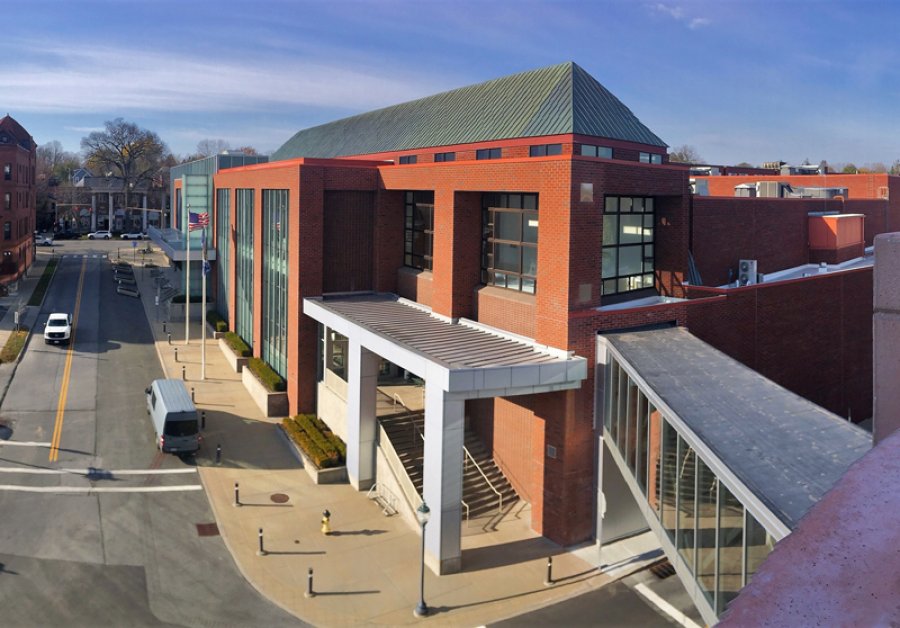
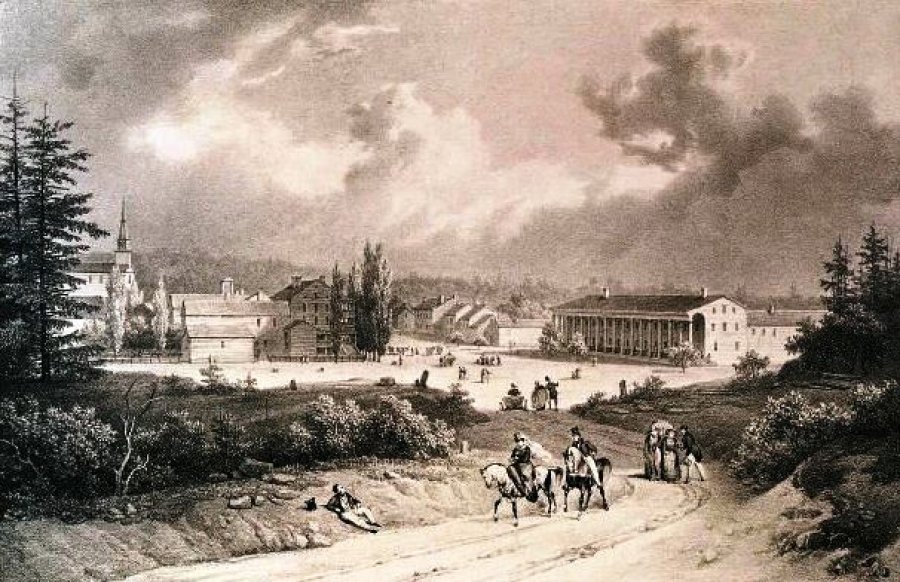
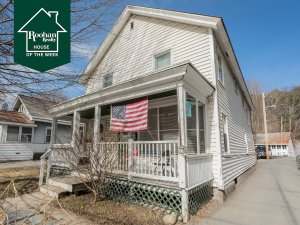
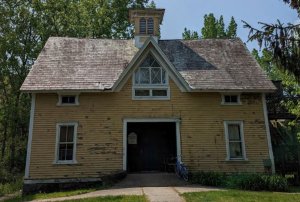

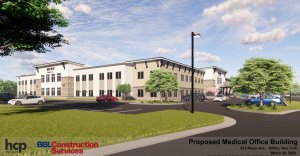

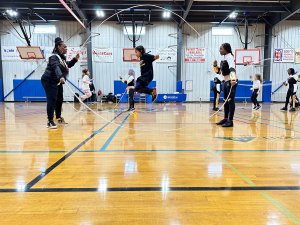



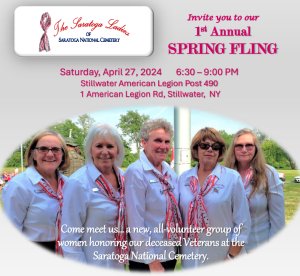






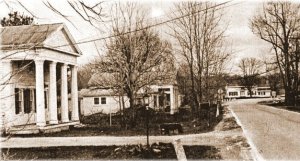







 How to resolve AdBlock issue?
How to resolve AdBlock issue? 









